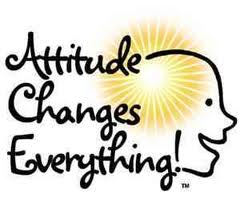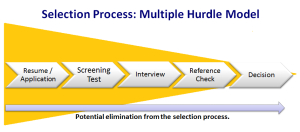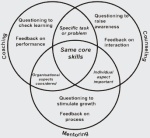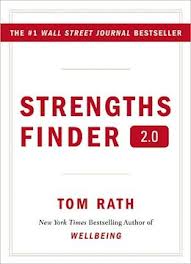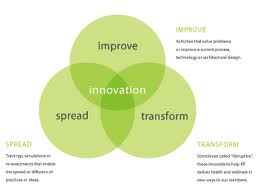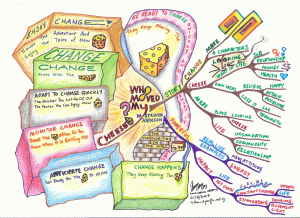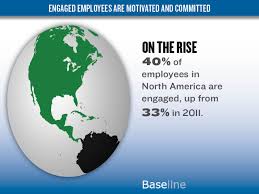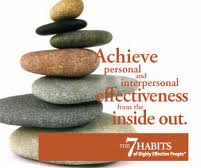Dynamics and Conflict within a Team
The team concept is not an unfamiliar one. We are surrounded by teams from the time we take our first breath until the time we leave this Earth. Doctors, nurses, aides, dieticians, housekeeping, and others all exhibited a collaborative effort to ensure our arrival into the world was a safe and successful journey.
Our adventures throughout grade school were also brought about by teamwork. Sports, movies, ballet, politics, business, higher education and several other parameters of life as we know it are the epitomes of teamwork, well-choreographed representations of the adage that states “Two heads are better than one. “Tasks achieved through teamwork are anticipated to be more thorough, more effective, more elaborative, more multifaceted, and more successful than those tasks carried out by one.
Individuals comprising a team contribute intrinsic skills and intuitive knowledge to the whole of the team, each member making up for what the other lacks. The result is a balanced load of all the skills necessary to complete the assigned task with proficiency (Morris, 2005). The ultimate success of the team is strongly influenced by the member’s ability to work together in a cohesive state.
“Team dynamics” encompasses any and all ways that individual affiliates interact with their counterparts en route to the common goal. The overall characteristics of the assigned task, along with the inert skill of each member may also have an impact on the team’s success (Morris, 2005). However, the focus here is more concerned with the interpersonal relationships within a team and strategies to employ in an effort to avoid conflict or to utilize should conflict arise.
The Oxford Dictionary of Sports Science and Medicine defines team dynamics as the following: Often referred to colloquially as ‘team chemistry’; the patterns of interaction among team members that determine team spirit, harmony, cohesion, and morale. Some coaches believe that team dynamics are beyond their control, resulting from the unpredictable mixture of the personalities. Others believe that one of the most important tasks of a good coach is to create the best possible team dynamics for success (Oxford, 2005). The concepts behind this definition can apply to all types of teams. The team’s ‘chemistry’ is a dominant factor outlining the success of a team. If team members cannot work together effectively, then completing their assigned project is a more difficult goal to achieve.
The virtual team is presented with quite a few more discrepancies to overcome than those teams centered in real time. Before they are fully able to work up to their potential, the virtual teammates must establish some kind of rapport with their fellow constituents, lay down mutual ground rules ensuring each member has a designated responsibility, and everyone must strive to meet the team‘s common goal, no matter their differences individually.
Of these aforementioned qualities, the neutral rapport is the most difficult one to render effectively. Unfortunately, personality is often misinterpreted or lacking in full in the virtual team environment compared to those real time teams, where the member’s personalities are vividly displayed. Physically present interaction allows one to pick up on the visual and unspoken cues that contribute to a person’s character. Body language, voice inflection and intonation, the nodding of a head, or firm handshake are just among the few effective communications present in the real world, but lacking in the virtual realm. One has to rely on their own interpretations of their affiliate’s written accounts and then come to a fair-minded conclusion.
“When it comes to teamwork, a person’s ability to build relationships, work with others, and communicate effectively can be more important than his or her technical expertise” (Dawson, 2005). This concept is crucial if an online team is to be successful. If one member does not have the ability to communicate their own thoughts and ideas online, how will the rest of the team incorporate that member’s contributions into the project?
The need for team dynamics is understood after the team is formed, when the individuals work collaboratively toward the common goal. The precursor to team dynamics is (or should be) thoroughly contemplated prior to assigning each member to the team, according to the task at hand and the skills of each member. If the team consists of those most knowledgeable in marketing an idea, for example, and the project calls for a team of post-marketing surveyors, then (obviously) the team would not know how to go about getting the job done, and so their dynamics would be hindered.
Team members need to trust each other as well as trust each other’s expertise. They need to feel confident that the other members are doing their share, so that when the team finally pools their ideas together, a multifaceted solution results.
Teaming is a collective responsibility; every member is held accountable for their individual contribution, as well as the timely completion of the collaborative effort. In 1965, Bruce W. Tuckman developed a model of five stages for developing teams: “forming”, “norming”, “storming”, “producing” and “ending” (Bookman, 2005).
At the “forming” stage, dynamics are important because this is where things begin. At this point you need the chemistry to see how to set up the group according to each other’s strengths and weaknesses. You need to feel confident that all of the members are willing to do what is required for the good of the team.
The “norming” stage is where the group comes together. Dynamics are important here because decisions need to be made and rules need to be set. The team needs to decide who will do what. Expectations, both of the group and of each individual, will also be determined at this point. The team also has to decide what will be done regarding conflicts, lack of participation of a member, and lack of , or insufficient, contributions. If the group dynamic falls apart here, the group will fall apart.
If a problem is going to exist, it usually makes itself present during the “storming” stage, which now comes into play. Strong dynamics within the group can help resolve potential problems before they become major issues. As long as the group can communicate well, they should be able to resolve any conflicts.
Next in line is the “producing” stage, where good team dynamics start to pay off as the team is now producing high volumes of quality work. At this point, if there are problems with the work, a strong team dynamic will ensure the issues are resolved. Finally (and appropriately titled), we come to the “ending” stage. The team itself has completed their task and is no longer required or just one member could be departing as their individual task is complete, marking this point. If the team as a whole terminates, a good dynamic can ensure each member walks away with a positive outlook, especially if there may be another opportunity to work with the same team. However, if the ending is due to a teammate’s departure, a good team dynamic will make it easier to carry on without that member’s presence (Bookman, 2005).
Improving team dynamics is actually a learning experience. Each member has to learn to develop or improve upon their ability to trust, be dependent upon, and work with each of their partners. One way to do this is through challenge programs.
Challenge programs are initiated away from the office, and are not specifically job related. The people involved will face physical or mental challenges with only the other members of their group to rely on. The team’s success will depend on each member’s ability to trust, guide and accept guidance, assist and accept assistance from their colleagues. When it comes to teams, and the team dynamic, the success of the team is dependant on the success of the individuals (Steinfeld, 2005).
Another concept, if a physical challenge program is not an option, is an on-line training program. According to the “News” section (2005), Personnel Today mentioned that the BBC used an on-line training program that showed that the majority of participants learned a ‘significant amount’ by participating in the program. The basis of this program was to show that teams can be more successful when the leaders use more of a teaching / coaching approach rather than a command-and-control approach.
Yet another option to improve team dynamics, and have a successful team, is found in Kenneth E. Holtman’s (2005) “The 10 commandments of team leadership.” (Training 101: It’s a team effort). The abstract is a follows:
The first requires them to stick to their mission and vision, which guide teams in creating and using more precise strategies and plans. The second commandment obligates team leaders not to tolerate undesirable behavior, which can only undermine team morale and performance if not addressed properly. The third commandment insists on the eschewal of self-interest to dominate over mutual interest, which helps avoid resentment, competition and conflict. The other rules require preventing fear to influence team behavior, fighting cliques which can affect team dynamics, dealing with conflict, refusing to recognize luck of trust as an excuse, encouraging risk taking, sharing information and managing processes carefully.
Although this article refers to the leadership role, it can also be a guide to improve the team dynamic at an individual level. Even an individual, is a leader, when it comes to their part of the project.
In summary, team dynamics are important because dynamic or ‘real’ teams have clarity of purpose. Everyone understands the team’s objectives, as well as own intrinsic roles in delivering them. Other key characteristics include a focus on quality, support for innovation, and the ability to work creatively with potential conflicts” (Agnes, 2005).
Time Management . . . A concept we should all thoroughly master. In our present lives, though, managing time seems to be an insurmountable feat. We have goals whose obtainment is so far in the distance that we tend to lose sight of them, put them off to satisfy the initial moment, and lose ourselves in the process.
We all have so many things going on in life these days. We all wear so many hats, working valiantly to meet up with the demands of each one. In doing so, we put too much pressure on ourselves to please the masses, not focusing on which one should come first or which ones can be eliminated to better suit the more prospective accessories.
- Prioritize! Analyze your collection of hats, keeping in mind that God only gave you one head because you are only one person. The two hands He blessed you with are more suitable for delegating the tasks by passing down or throwing out the hats which do not measure up to the high priority coverings.
- Don’t waste time finding time. Each and every day seems to begin with focusing on the fastest route from point “A” to point “B,” like those deluded souls you may see driving around forever in a crowded parking lot simply to get a closer space, when they could have been in the building faster if only they had taken the first available slot.
- We put too much time-consuming thought into those misconstrued notions held dear to our “get rich quick” “instant gratification” society. Success does not happen overnight; it never will. Honest achievements are the result of dedication, blood, sweat, tears, pain, anguish, mental fatigue, still persevering in light of all these constituents. Do not delude yourself to the “get something for nothing” ideal. In all matters of simplicity, it is just not going to happen. Instead, spend one day planning out your entire journey en route to destination, “My Ultimate Goal,” mapping out your daily trek so that you know the steps required to make your arrival at your future locale a realistic ambition.
- Once the plan is made, we tend to start off by flying and then realize we find more pleasure in the up close and personal (although more time-consuming) scenic route. Do not focus on the negative concept of the ultimate goal being so far away, rather focus on the here and now – the positive reinforcement and instant gratification that makes itself present, daily, through climbing and conquering each individual cliff on the way to the your mountain’s pinnacle.
- If you have chosen to spend your time griping to others about how unfair life can be, then you have the time to realize the actions required to change it. If you have the time to criticize others who are happy with their lives, then you have the time to determine what you need to do to satisfy your own, putting those realized actions into motion.
- Do not succumb to your past negative experiences that have defined your life up to this point. Reflect and eject or define and redesign! Recognize and get rid of those experiences not applicable to your present life. Or, acknowledge those hindrances and transform them into positives. We only become strong by being willing to overcome. Once we overcome the negatives in our past, we can then view them as a present and future positive, in retrospect.
- Do not allow present or future obstacles to terminate your journey. Push them aside, jump over them, steer around them, or do whatever you have to do to find your way back to the path you once initiated. If the obstacles are applicable to your future and you must bring them along, simply take them under your wing and walk, instead of flying. More time will be required to reach your destination, but at least you will be continuing in the right direction. According to Carol Carter, Joyce Bishop and Sarah Lyman Kravits (2002), “When you set goals, prioritize, and manage your time effectively, . . . you can develop the kind of focus that will help you achieve . . . ” Individuals and the whole team can utilize this strategy to enhance their own time management skills.
- Time management can be accomplished at the individual level by assessing one’s daily schedule. Write a list of wanted accomplishments, and then prioritize. Be realistic when compiling a daily schedule, and do not list more than can be effectively achieved by sundown.
- Take control of goals and stay on task. Learn how to say “no” to keep control of your schedule. If unforeseen deviations do occur, simply get back on track as soon as possible.
- Times saving techniques are also helpful with effective time management. Take a few minute each day to plan the events happening that day, or schedule known appointments and other obligations occurring days, weeks, even months away, and then regressing to mark progress thus far. Day Runners, calendars, date books, PDAs and computers are some of the many tools available for using time wisely. Place items in “urgent” and “non-urgent” categories as the list is compiled. (Stephen Covey’s 4 Quadrants Principle). Schedule within a reasonable time frame. Allow for relaxation breaks so that the focus is heightened once back on task.
Incorporating critical thinking into our daily lives and daily routines will help us to use this technique in many areas of our lives and make more effective decisions. As the day starts, think through your day and look over your daily list to see in any adjustments need to be made. Again allow for flexibility.
Use problem-solving for conflicts in goals needing to be met for the day. Prioritize these goals and re-evaluate as necessary. Listen to pre-recorded messages when commuting to enhance your retention. This will also develop auditory skills while, simutaneously, saving time.
While at work, take advantage of break times and lunch times to fit some time for review. Keep a notepad available or PDA to make notations during the day of important ideas.
As a group, time management can be accomplished by effective communication within the working group. Explore all avenues to contact each team member. Some ways to contact each other is by email and phone. When going into the team work area online, check in to allow other members of the team to know your presence. This will allow time for dialogue. Establish set time schedules with the group to be together to go over projects online.
If a member cannot be present then they should contact another team member and follow-up after the meeting to understand the team discussion and plans. Another effective time management tool is for the team to be have defined individual roles and each to be accountable and responsible. If everyone pulls their roles and does her part of the goal then all will have equal weight and more will be accomplished towards the team goal. The individual and team effort to time management will enhance team performance as well as enhance team outcomes. (Carol Carter, Joyce Bishop and Sarah Lyman Kravits, 2002).
Conflict within a team can either be constructive or destructive and is dependent upon each affiliate’s adeptness to manage the projected outcome (Porter, 2003). Conflict occurs when communications break down, assumptions are made, and then animosity makes itself present as a result.
The potential for conflict can arise within any type of team, yet does not have to be viewed as inevitable if the proper precautionary measures are initiated. The team’s ability to collaboratively prevent its occurrence or resolve preexisting conflict is the primary challenges. An opening analysis of possible discrepancies, along with detailed strategies to triumph over them or, better yet, avoid them entirely should be implemented at the team’s first encounter.
While working in a team setting, everyone must be considerate of each other’s perspectives while, simultaneously, demonstrating their own capacity to acknowledge and reciprocate each of the following: suitable rapport, positive feedback, suggestive statements, and constructive criticism. Although the motivations and intrinsic ideas concerning how the overall goals will be met are uniquely subjective, each is entitled to their own opinion. Every member of the team should be focus on their commonalities in an effort to view the bigger picture, working collectively toward the ultimate goals of the team.
To effectively deal with conflicts in a team, one mustfirst deal with their own internal dissensions, thereby allowing proficiency in relating to others. Many conflicts stem from the impending presence of divergent attitudes, values, and perceptions within the team. (DeJanasz-Dowd-Schneider, 2001) Before trying to resolve team conflict, one must take the time to consider the beliefs applicable to each member, as well as their own, incorporating a substantial portion of each into the final thoughts. One must organize these multifaceted thoughts into ideas reflective of each member’s perspectives. Upon doing so, one exhibits their own critical thinking skills while, concurrently, presenting themselves to their teammates as non-judgmental and approachable, open-minded and adaptable. In Resolving Conflicts on the Job, Wisinksi (1993) suggests his unique “A-E -I-O-U” model as a guide one can utilize when discussing a resolution within a team:
- A Assume the other people involved in the conflict mean well.
- E Express your own feelings.
- I Identify what you would like to see happen.
- O Outcome – express the outcome you would like to see while remaining open to another outcome that may satisfy your needs and concerns.
- U Understanding – the agreement should be understood, and committed to, by each member of the team (pp. 27) Once the individual team members understand the conflict, they can analyze all concerning parameters and resolve the conflict in unison. Once the individual team members understand the conflict, they can analyze all concerning parameters and resolve the conflict in unison.
One approach to managing conflict is Endelburg’s “4 Rs Method” as presented below:
- Reasons. The causes or reasons for the conflict are explored and openly, yet respectfully discussed.
- Reactions. Team members look at their own reactions to the conflict. If those reactions are destructive, rather than constructive, individuals can self-correct and take the necessary steps to recommit to team success.
- Results. If the conflict is not resolved, what might happen? How might the team work together to resolve the conflict in a constructive manner?
- Resolution. Which approach to conflict resolution could be used to effectively resolve the conflict? (Engleburg, 2003).
When the situation becomes uncontrollable, setting up a resolution meeting would be the best approach. Any conflict between individual members needs to be addressed through the team room, rather than individually without the team’s support. Problems usually arise when the team has to make up for the lack of participation on behalf of one or more slacking players.
Informing the team of potential delays well in advance allows for the timely delegating of additional assigned tasks to the remaining members. Assigning two team members to complete one broad task can prevent the last minute rush to make up for an individual’s deficient effort. All primary elements are represented in the final product, despite the unaccountable party’s lack of contribution
. Identifying potential dilemmas in the beginning and creating alternate strategies to compensate for them (should they arise) alleviates these stressful, last minute, accommodations. Once all other paths to resolve conflict within the teamhave been exhausted to no avail, the team should then turn to a facilitator outside the realm of the team for mediation. As a nonpartisan party, this person would make unbiased assertions to resolve the conflict, after examining the substantial arguments on both sides.
While working in a support group systemit is important to work collaboratively to complete the assigned task, each team member having their own contributions, validating and reinforcing the improvement of other’s weaknesses, and (in turn) feeding off each other’s strengths.
A team whose members qualify the ultimate goal by exhibiting courtesy and respect to all their counterparts will significantly diminish their risks for conflict. If each member acknowledges their own strengths and weaknesses, along with those of their constituents and utilizes each positive and negative aspect for the betterment of the team, the collaborative goal will certainly prevail. In regard to the assigned tasks, the team should utilize their established dynamic principles and collaboratively work toward the common goal of the team.
To be on the safe side, the team should unanimously agree to have the task completed at least one day prior to the deadline, so that procrastination does not overrule and equate to a sloppy presentation.
Knowing that each team member is equally responsible for contributing their part, and accountable for the entire outcome, each member is obligated to not only do their part, but also assist with their teammates’ assigned tasks. To be effectively presented, each right hand must know what the left hand is doing.
Members of a team should provide a thorough review of each other’s work as evidenced by an accurate summation of the topic covered, highlighting the most impressive points, then (if applicable) proceeding to constructively criticize anything they see as inappropriate, redundant, inaccurate, unappealing, etc., with detailed suggestions for improvement.
Each individual contribution is a reflection each participant and so should be revised several times to emit a positive light.
Once all revisions have been made, the drawing up of the final draft should (again) be collaborative effort. Any and all missed discrepancies will be accounted for on this pre-final review.
Once all mistakes are well documented, the final report can be drawn and submitted to the team for a final analysis. If the team is in unanimous agreement, the project can then be submitted.
In conclusion, a group must be effective in carrying out their assigned tasks. For effectiveness to occur, each member must be fair-minded, respectful of their teammates, dedicated to meeting the deadline, and willing to work through potential rough spots in order to be a valid representation in their team, bringing the team as a whole to the ultimate goal. When the task is complete, each member can take pride in their work, both as an individual and as a team.
References
Engleberg, I., Wynn, D., & Schuttler R. (2003). Working in groups: Communication Principles and Strategies (3rd ed.). Boston: Houghton Mifflin, p.154.
DeJanasz-Dowd-Schneider, (2001). Interpersonal Skills in Organization. McGraw-Hill Companies, p. 246.
Shelia Porter JD, (2003). Managing Conflicts in Learning Teams. University Of Phoenix; Learning Team Toolkit, p. 1.
Wisnski, J. (1993). Resolving Conflicts on the Job. New York; American Management Association, p. 27-31.
Agnew, T. (2005, April). Dynamic teams and team dynamics: at RCN congress this month, RCN clinical leadership team co-director Anne Benson will explain her ideas on enhancing team effectiveness. Nursing Management (Harrow), 12 (1), pg. 7(1). Retrieved May 19, 2005, from InfoTrac OneFile database.
Bookman, B. (1992, August). Developing teams. Training, 29(8), pg. 12(2). Retrieved May 19, 2005, from InfoTrac OneFile database.
Dawson, J. (2005, April). The S.E.C.R.E.T. to successful team dynamics. Business Credit, 107(4), pg. 24(2). Retrieved May 19, 2005, from InfoTrac OneFile database.
Hultman, K. (1998, February). The 10 commandments of team leadership. Training and Development, 52(2), pg. 12 (2). Retrieved May 19, 2005, from InfoTrac OneFile database.
News. (2004, August 10). Personnel Today, pg. 7, 1 pg. Retrieved May 19, 2005, from ProQuest database.
Steinfeld, C. (1997, April). Challenge courses can build strong teams. Training and Development, 51(4), pg. 12(2). Retrieved May 19, 2005, from InfoTrac OneFile database.
“team dynamics” The Oxford Dictionary of Sports Science and Medicine. Oxford University Press, 1998. Oxford Reference Online. Oxford University Press. Apollo Group. 20 May 2005
Morris, C. G., Maisto, A.A. (2005). Psychology: An Introduction. (12th ed.). In Social Psychology, (pp. 590-591). New Jersey: Prentice Hall.






